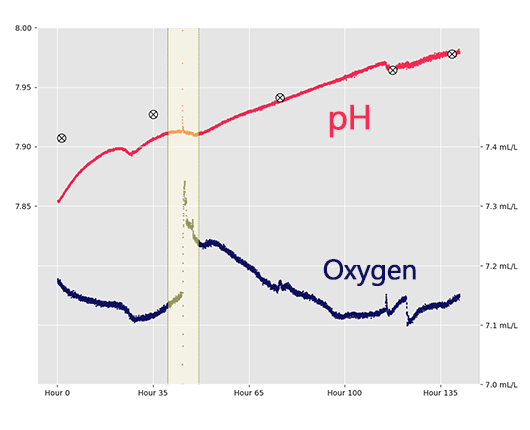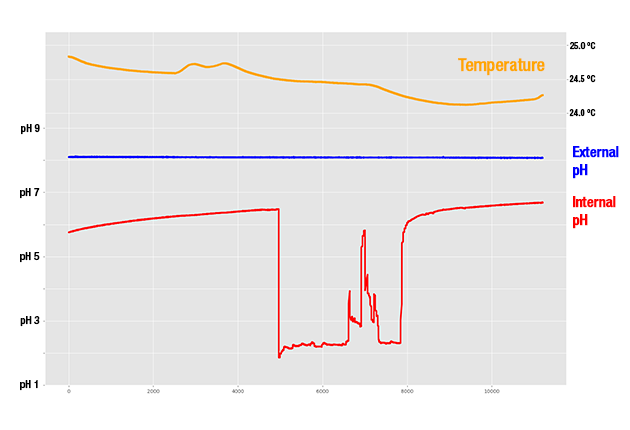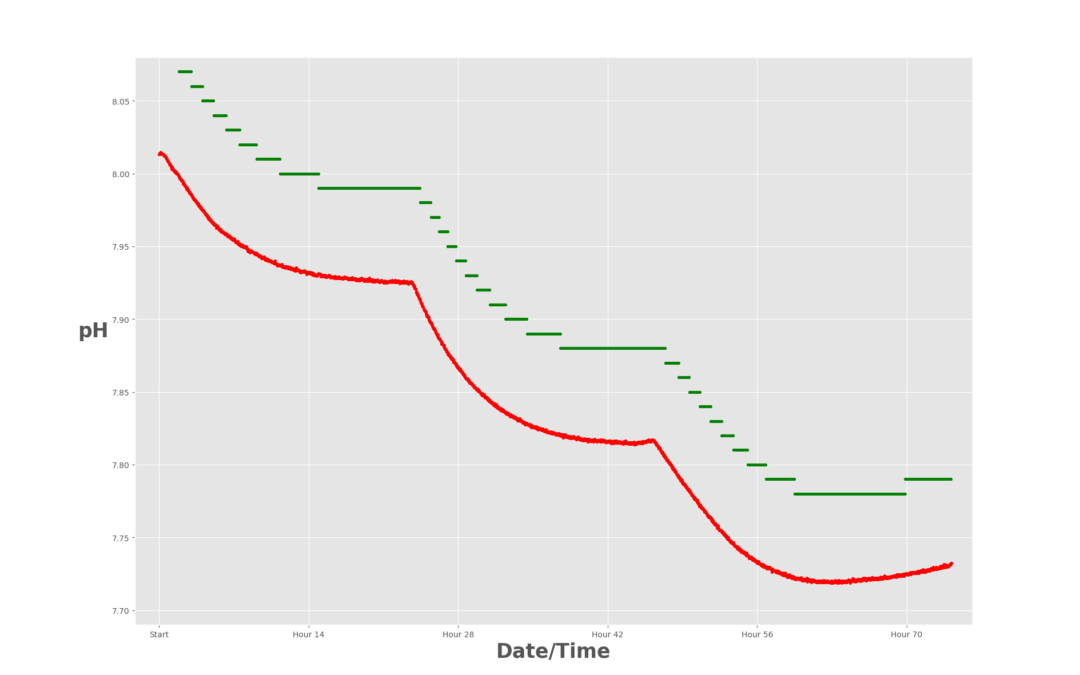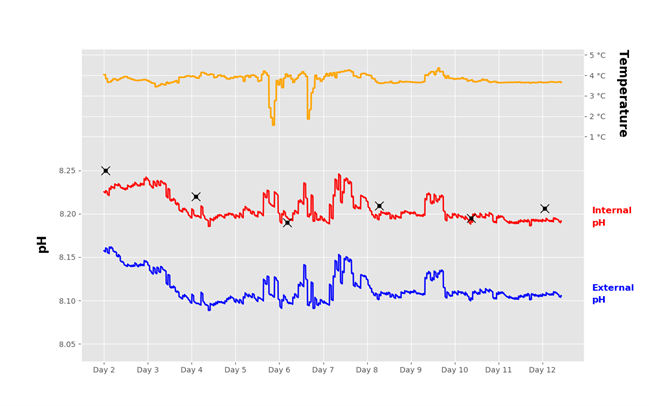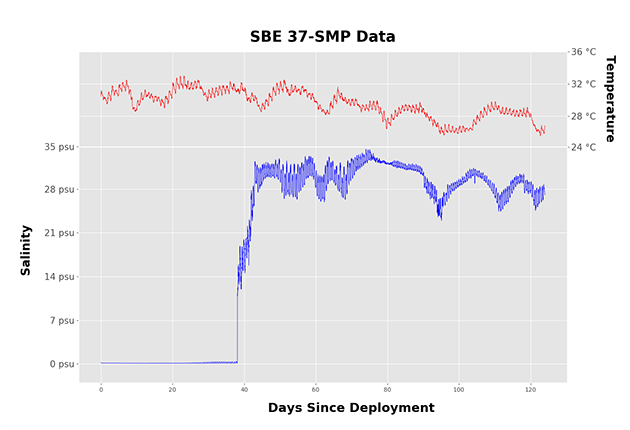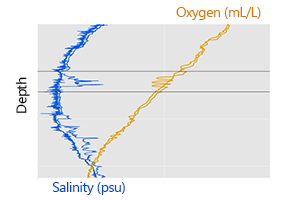September 2019 Newsletter These data show a small but rather catastrophic deployment error. Shown above, pH and dissolved oxygen data before the highlighted area did not match bottle samples or nearby validation sensors, but data after the highlighted area accurately...
